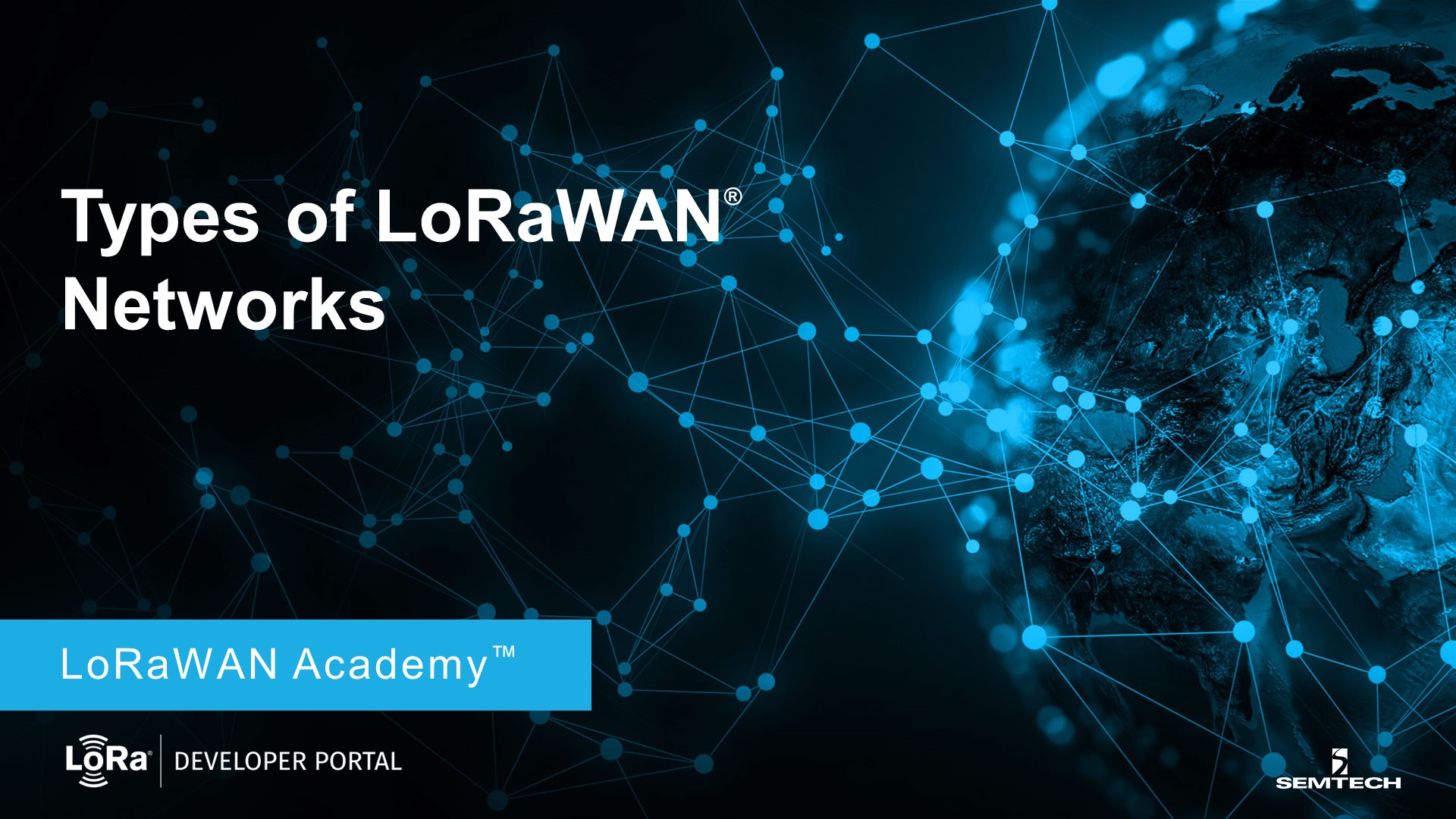Types of LoRaWAN Networks
Let's start with a video:

(Time: 8:22 minutes )
Given that the LoRaWAN standard makes use of the unlicensed ISM bands, there is no need to pay for an expensive radio frequency license to be able to use and deploy a LoRaWAN network. This makes LoRaWAN exceptional, since anyone can set up a network. This low barrier to entry has led to the adoption of LoRaWAN by a number of Public Network Operators (also called Public Network Carriers), and a similar number of Private and Open community networks. A description of each follows.
Public Network Operators
In most countries, one or more public LoRaWAN networks are fee-based and provided by telecommunications operators. These operators have deployed a number of gateways and allow devices to be registered on their networks once the fee is paid. The pricing often depends on the number of connected devices and the number of data packets those devices send and receive per day.
Note
Generally, Public Network Operators have agreements in place with other network operators to allow devices to roam among different networks.
- Eleven-X in Canada
- KPN in The Netherlands
- MachineQ and Senet, and Everynet in the U.S.
- Orange in France
- SK Telecom in South Korea
- Swisscom in Switzerland
Private Networks
In contrast to the publicly-available LoRaWAN networks, there are also private LoRaWAN networks. These networks can be created and maintained by individuals or companies. Currently, there are a significant number of end devices that are deployed on private networks. These end devices are typically used by individuals or companies to collect data. Device owners may also want to be able to control their devices in the field.
Individuals and companies that want more control of the data they collect, and of the operation of their end devices, generally install and run their own networks. Therefore, they do not need to pay for connected devices or the number of packets sent. Such entities, however, do not typically open their networks to other devices.
There are also companies that specialize in deploying and managing private networks. These include:
The prices these companies charge for hosting end devices on their networks is likely to depend on the number of connected devices, or the number of packets those devices send and receive per day.
Open Community Networks
As an alternative to these fee-based public networks, there are also networks, such as The Things Network, which are public, but not fee-based. The Things Network runs an open, crowdsourced LoRaWAN network. The network is maintained by thousands of people and organizations worldwide, all of whom run one or more gateways to ensure network coverage. Everyone is free to add gateways and connect end devices to The Things Network.
Helium is a global, distributed network of Hotspots that create public, long-range wireless coverage for LoRaWAN-enabled IoT devices. Hotspots produce and are compensated in HNT, the native cryptocurrency of the Helium blockchain. The Helium blockchain is a new, open source, public blockchain created entirely to incentivize the creation of physical, decentralized wireless networks. Today, the Helium blockchain, and its hundreds of thousands of Hotspots, provide access to the largest LoRaWAN Network in the world.